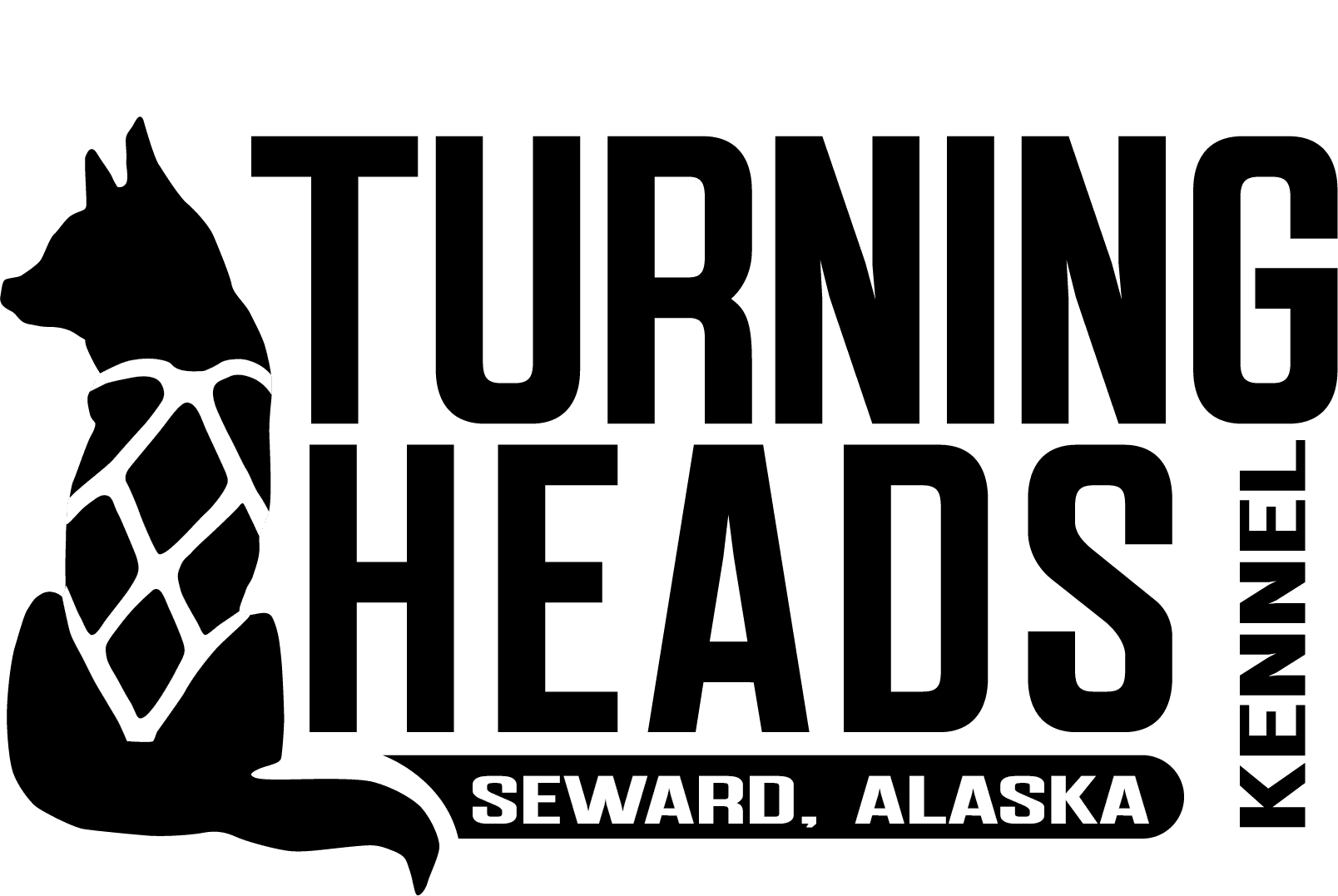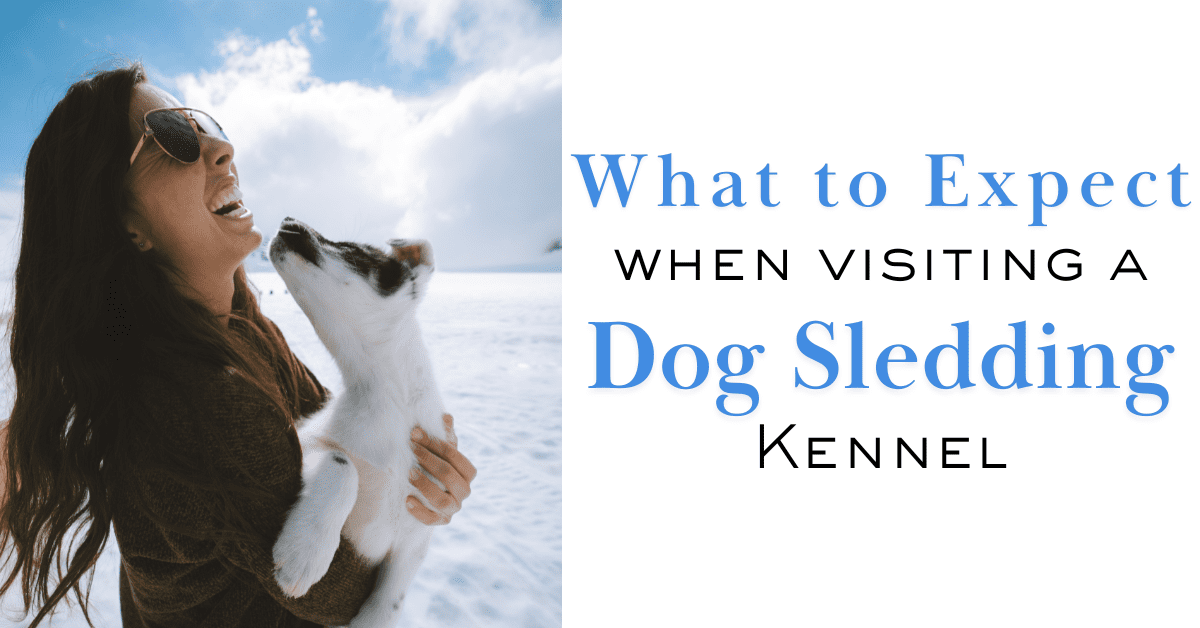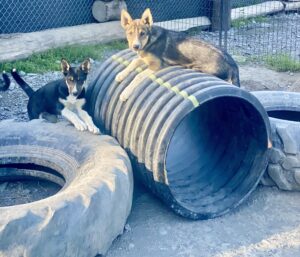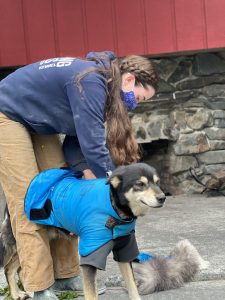Visiting a dog sledding kennel allows you to connect with the beautiful sport of dog mushing and the amazing canine athlete participants.
Visiting a dog sledding kennel is an immersive experience that offers a unique glimpse into the world of sled dogs and the people who dedicate their lives to this captivating sport. Whether you’re a dog lover, an adventure seeker, or simply curious about this traditional mode of transportation turned competitive sport, a trip to a dog sledding kennel can be both educational and exhilarating. When visiting a dog sledding kennel, you will learn about the care and training of these remarkable dogs and see firsthand the bond between mushers and their teams. Here’s what to expect and how to make the most of your visit.
How to Dress for Vis Dog Sled Tour
Dressing appropriately is essential for enjoying your dog sledding adventure, whether it’s in the winter or summer. Here’s how to prepare:
To enhance your experience when visiting a dog sledding kennel, consider reading some books on dog sledding before you travel.
Winter Dog Sled Tour:
- Base Layers: Wear moisture-wicking thermal underwear and socks to keep you dry and warm.
- Insulation Layers: Add fleece or down layers for insulation. These should trap heat effectively.
- Outer Layers: Wear a waterproof and windproof jacket and pants to protect against snow and wind.
- Accessories: Don’t forget insulated gloves or mittens, a warm hat, a neck gaiter, and hand warmers. Sunglasses or ski goggles are also recommended to shield your eyes from the glare of the snow.
- Footwear: Sturdy, waterproof winter boots with good traction are essential. Consider adding insulated boot liners for extra warmth.
Summer Dog Sled Tour:
- Light Layers: Wear breathable, lightweight clothing. Opt for long sleeves and pants to protect against sunburn and bugs.
- Waterproof Outerwear: A light rain jacket or windbreaker is handy for unexpected weather changes.
- Footwear: Comfortable, closed-toe shoes like hiking boots or sneakers are ideal for navigating uneven terrain.
- Accessories: Bring sunglasses, sunscreen, and a hat to protect against the sun. Bug spray is also recommended during summer months.
- Durable Clothing: Since kennels can be dusty or muddy, wear clothes you don’t mind getting a little dirty.
Summer Glacier Dog Sledding Tour
Dressing for a summer glacier dog sledding tour requires balancing comfort and preparation for cooler conditions on the ice. Here’s what to wear:
- Layered Clothing: Start with a moisture-wicking base layer, add a lightweight fleece or sweater, and finish with a waterproof and windproof jacket. Even in summer, glaciers can be chilly and windy.
- Pants: Wear durable, water-resistant pants to protect against the damp and cold conditions.
- Footwear: Sturdy, waterproof boots with good grip are essential for walking on icy terrain.
- Accessories: Bring sunglasses to reduce glare from the ice and consider gloves to keep your hands warm and a hat for additional warmth. Sunscreen is also recommended to protect against the intense reflection of sunlight off the glacier.
A Warm Welcome from Furry Athletes
Before entering the dog yard, you’ll receive an introduction to what to expect. Each kennel is unique and different dog kennels have different rules for their dogs. It’s important to be respectful of the dogs and not to approach the dogs until you are given permission.
Houses Are for Resting
Sled dogs are high-energy working animals, and their dog houses are a place of rest. While it might seem unusual to see so many dogs tethered in one area, remember that sled dogs spend much of their time away from their houses, either training or running. Even in summer, they often run 6-8 miles daily, making their houses a well-deserved retreat.
In addition to being tethered, many kennels also have pens for their dogs. These pens can be used to separate females in-heat or can be used as run pens. Some pens have toys or other enrichment items to help dogs stay stimulated on days when they are not training.
Unique Personalities of Sled Dogs
Before approaching any dog, always ask for permission. Sled dogs have a wide range of personalities. While many are friendly and eager to meet new people, others may prefer working with their musher exclusively. Respect each dog’s preferences and don’t be alarmed if some dogs seem uninterested in visitors—they’re likely focused on their role as athletes. Conversely, some dogs may be overly friendly, so be prepared for enthusiastic greetings from these lovable canines.
Educational Tours
Most kennel visits include an educational component where you’ll learn about the history of dog sledding, the evolution of the sport, and the breeds involved, such as Alaskan Huskies. Mushers often share personal stories, providing insight into their daily lives, training routines, and the dedication required to maintain a sled dog team. This is an excellent opportunity to ask questions and deepen your understanding of the sport.
Meet and Greet the Team
The highlight of most kennel visits is meeting the sled dogs. You’ll see firsthand the strong bond between mushers and their dogs, as well as each dog’s unique personality. With the musher’s permission, you can pet the dogs and experience their warmth and energy up close. This interaction showcases the care and affection that go into raising and training these remarkable animals.
Behind-the-Scenes Operations
Visitors can learn about the daily operations of the kennel, including feeding schedules, training routines, and the equipment used in dog sledding. Depending on the season, you might witness harnessing demonstrations, observe a team being hooked up, or see a training run. This behind-the-scenes perspective provides a deeper appreciation for the effort involved in preparing a sled dog team.
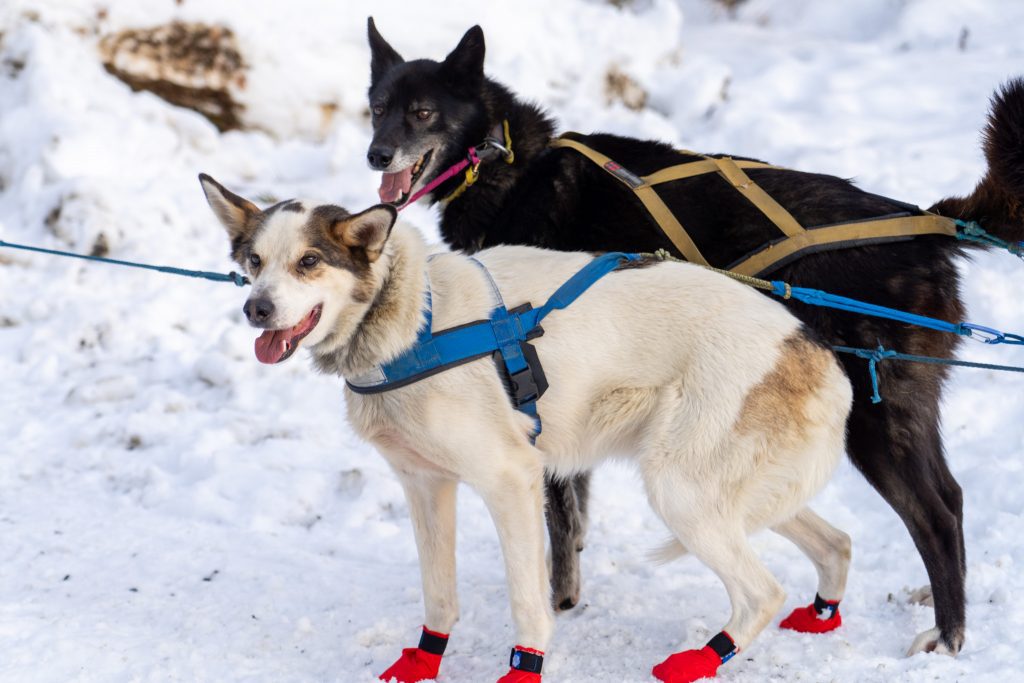
Sled Demonstration or Ride
In winter, many kennels offer sled rides, giving visitors the chance to experience the thrill of dog sledding firsthand. During summer, kennels often provide cart rides or dry-land demonstrations. Riding behind a team of sled dogs highlights their incredible speed, strength, and enthusiasm, leaving a lasting impression on visitors.
Holding Sled Dog Puppies
The cherry-on-top of any visit to a sled dog kennel is meeting the youngest members of the pack, the puppies. Visitors to sled dog kennels help play an important role in socializing young dogs. Although puppies aren’t at every kennel year round, many kennels have puppies during the summer either from their own dogs or borrowed from other mushers.
Souvenirs and Support
Many kennels have gift shops where you can purchase souvenirs such as t-shirts, hats, and memorabilia. These purchases support the kennel and provide a keepsake from your visit. Some kennels also have adoption programs for retired sled dogs, offering a meaningful way to support the animals and take home a piece of the experience.
Tips for Your Visit
- Dress Appropriately: Kennels are outdoor environments, so wear weather-appropriate clothing and consider layers. In summer, wear clothes you don’t mind getting dirty.
- Listen and Learn: Be open to learning from the mushers, who are passionate about their craft and eager to share their knowledge.
- Interact Respectfully: Always ask before approaching or touching the dogs, and follow the musher’s instructions. Respect shy dogs and focus on those that want attention.
- Capture Memories: Bring a camera to document the experience, but always ask for permission before taking photos, especially of mushers or private property.
- Consider Tipping your Guide: Although not necessary, many guides appreciate being tipped for a job well done. A common industry standard is about 10% of the cost of your tour.
Engaging with the mushers while visiting a dog sledding kennel can provide valuable insights into their training techniques and the daily life of sled dogs. Don’t hesitate to ask questions!
Conclusion
While visiting a dog sledding kennel, take the opportunity to ask about the history of the kennel, each dog, and the sport itself. Understanding each dog’s racing history will enrich your visit.
A visit to a dog sledding kennel is more than just a tour; it’s an experience that connects you with the history, culture, and spirit of dog sledding. It offers a rare opportunity to learn about the lives of sled dogs and their mushers while showcasing the passion, dedication, and teamwork that define this incredible sport. Whether you leave with unforgettable memories, newfound respect for the sport, or even dreams of mushing yourself, your visit to a dog sledding kennel is sure to be a highlight of your Alaskan adventure.
